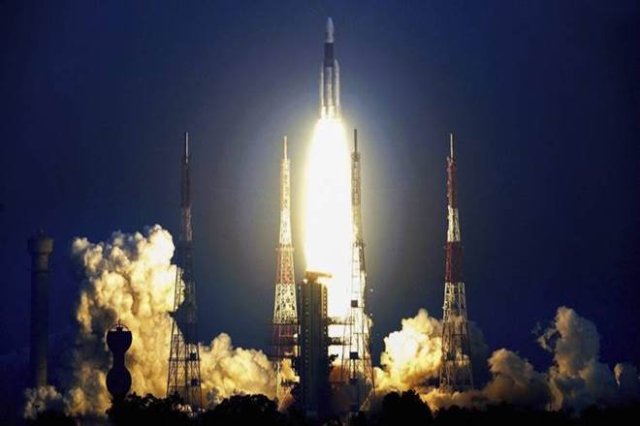India’s Largest And Heaviest Satellite, The GSAT-11, Was Successful Orbited
Aadhya Khatri - Dec 07, 2018

India's largest communication satellite, the GSAT-11, was launched successfully onboard an Arianespace rocket.
- Delhi Is The World’s Most Polluted Capital City For Three Years In A Row
- Indian Farmers Install High-Tech, Night-Vision CCTV Cameras To Protect Themselves
- Looking For The Best Electric Bike In India 2021? Take A Look At These
The ISRO (short for Indian Space Research Organization) has announced the successful launch of the Indian most massive satellite, the GSAT-11, onboard an Arianespace rocket. The event took place at 02:07 am (IST) on Wednesday and lasted for about 33 minutes, from the Spaceport at a French territory called Kourou.
The launch placed India’s heaviest, largest, and most powerful satellite into an elliptical Geosynchronous Transfer Orbit, which was designed to last for about 15 years. In the next few days, the GSAT-11 will make a journey of 36,000 km above the equator to reach the Geostationary Orbit by its built-in propulsion systems.
The desired position for the satellite is 74-degrees east longitude, and the next step will see the four antenna reflectors and two solar arrays move into their locations in orbit. The GSAT-11 will go into action after it has taken all the in-orbit tests.
When the satellite separated from the rocket, ISRO's Master Control Facility was in charge of controlling and commanding the GSAT-11. They confirmed that the satellite was in a normal state to operate.
ISRO said that the GSAT-11’s success meant better connectivity for the Indian mainland as well as islands' citizens by providing 8 hub beams in Ka-band and 32 user beams in Ku-band. Users can expect 16 GBPS data link services in India thanks to the satellite.
Individuals, as well as enterprise, can benefit from this success through broadband connectivity and high data rate applications that the GSAT-11 provides.
Under the Digital India Mission that aims to achieve 100 GBPS data connectivity via a total of four satellites, the GSAT-11 is the third to be launched to reach this target.
More advanced communications satellites will be launched in the future to create a multi-spot beam antenna coverage for mainland India and her islands. That is not all. The satellite also plays as a platform to provide demonstrations for next-generation applications.
Onboard with the GSAT-11 is the GEO-KOMPSAT-2A for KARI. The latter’s mission is to monitor the atmosphere along with its phenomena.
Next in line to be orbited are the GSAT-30, and the GSAT-31 and Arianespace will still be the contract holder with the Indian space agency.
The GSAT-11 was supposed to be launched on May 25, but after ISRO’s call for further tests, the event was rescheduled.
Featured Stories

Features - Jul 01, 2025
What Are The Fastest Passenger Vehicles Ever Created?

Features - Jun 25, 2025
Japan Hydrogen Breakthrough: Scientists Crack the Clean Energy Code with...

ICT News - Jun 25, 2025
AI Intimidation Tactics: CEOs Turn Flawed Technology Into Employee Fear Machine

Review - Jun 25, 2025
Windows 11 Problems: Is Microsoft's "Best" OS Actually Getting Worse?

Features - Jun 22, 2025
Telegram Founder Pavel Durov Plans to Split $14 Billion Fortune Among 106 Children

ICT News - Jun 22, 2025
Neuralink Telepathy Chip Enables Quadriplegic Rob Greiner to Control Games with...

Features - Jun 21, 2025
This Over $100 Bottle Has Nothing But Fresh Air Inside

Features - Jun 18, 2025
Best Mobile VPN Apps for Gaming 2025: Complete Guide

Features - Jun 18, 2025
A Math Formula Tells Us How Long Everything Will Live

Features - Jun 16, 2025

Comments
Sort by Newest | Popular